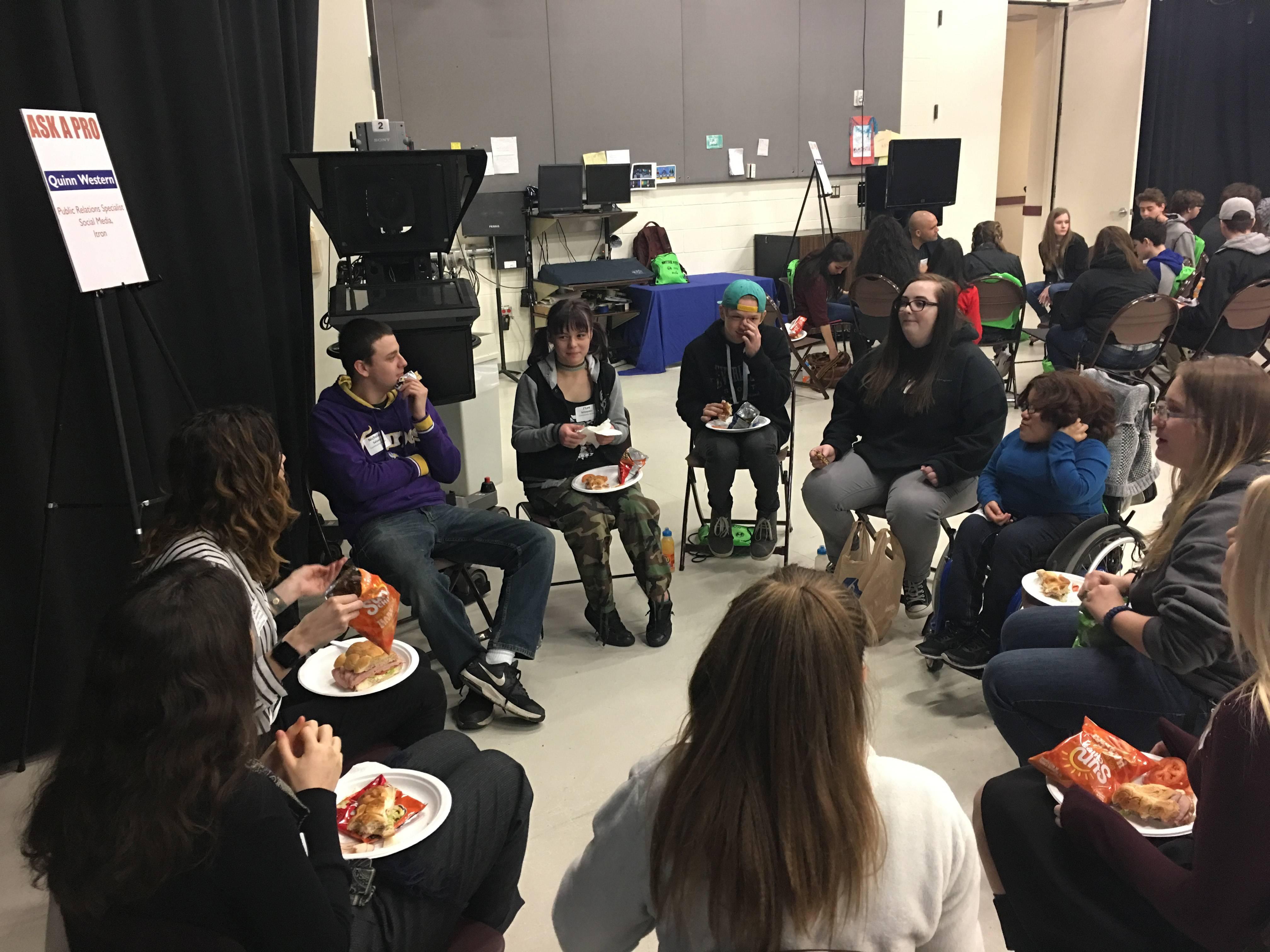For the third time, KSPS Public Television and The Northwest Alliance for Responsible Media (NW-ARM) hosted MediaFest, an intensive seminar for area high school students. The event was made possible through the generous support of Itron.
Students heard six micro-lectures from local media professionals, toured the largest unencumbered studio in Spokane, enjoyed lunch with a pro, participated in media consumption workshops, and experienced full immersion into the modern media world.
Dan Nailen, arts and culture writer for the Inlander spoke on newspaper journalism. Kristi Gorenson, news anchor on KXLY 920 and anchor of Washington Grown, presented on journalism for radio and television. Quinn Western, public relations and marketing specialist at Itron, gave a presentation on social media and corporate communications. Mary DeCesare and Jim Zimmer, producer-directors at KSPS Public television, described documentary film-making. Raja Bose, photojournalist for Gonzaga University and independent photographer presented on photography and videography. Juan Mas, producer-director known for films like Drive Angry, The Iceman, and the Spokane-filmed SyFy series, Z Nation, presented on dramatic film-making and the Spokane film scene—including an invitation to another KSPS-hosted event, 50 Hour Slam. Jeff Bollinger, photojournalist for KREM 2 news brought a professional grade drone and other hi-tech equipment for the students to examine.
After tours of KSPS Public Television’s offices and studios, students were invited to pull up a chair with the professional whose presentations they most enjoyed to dig deeper in one-on-one discussion.
The latter half of the day was focused on responsible consumption of media—in particular, how to spot libel, slander, and fake news.
Dr. John Caputo of Gonzaga University got the students’ attention by asking if they’ve ever lied, before diving into the high stakes world in which a lie can be spread to millions of people in an instant.
When asked to define fake news, one eager student answered, “CNN!” When asked how he knew CNN was fake, he explained that President Trump says it’s fake. This led to a discussion on journalistic integrity, the duty to correct errors, and how to spot bias.
Drs. Carolyn Cunningham and Heather Crandall of Eastern Washington University and NW-ARM shared The Breaking News Consumer’s Handbook: Fake News Edition, which gave students 11 red flags to help them think critically about stories of suspect content. Armed with these criteria, the students worked in small groups to analyze sample stories and then create their own fake news headlines.
- Big red flags for fake news: ALL CAPS, or obviously photoshopped pics.
- A glut of pop-ups and banner ads? Good sign the story is pure clickbait.
- Check the domain! Fake sites often add ".co" to trusted brands to steal their luster. (Think: "abcnews.com.co")
- If you land on an unknown site, check its "About" page. Then, Google it with the word "fake" and see what comes up.
- If the story offers links, follow them. (Garbage leads to worse garbage.) No links, quotes, or references? Another telltale sign.
- Verify an unlikely story by finding a reputable outlet reporting the same thing.
- Check the date. Social media often resurrects outdated stories.
- Read past the headlines. Often they bear no resemblance to what lies beneath.
- Photos may be misidentified and dated. Use a reverse image search engine like TinEye to see where an image really comes from.
- Gut check. If a story makes you angry, it's probably designed that way.
- Finally, if you're not sure it's true, dont share it! Dont. Share. It.
Students who turned in feedback surveys were entered to win an iPad Mini, and one lucky student went home with that prize—provided by Itron. Feedback was strong and valuable, with excellent suggestions for improvements to the program for next time.
The annual event has been tentatively moved to occur earlier in the school year next year, so interested students and faculty should expect to hear about the next MediaFest event this coming October (2017).



